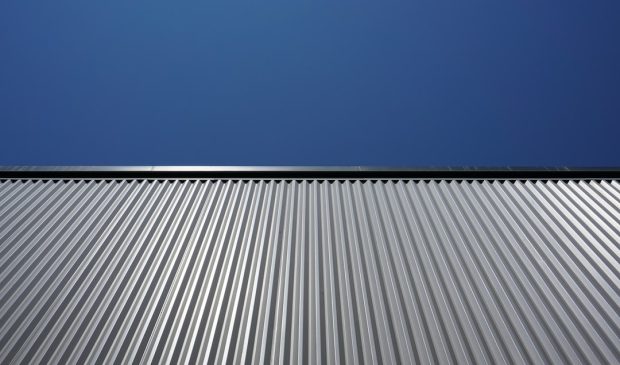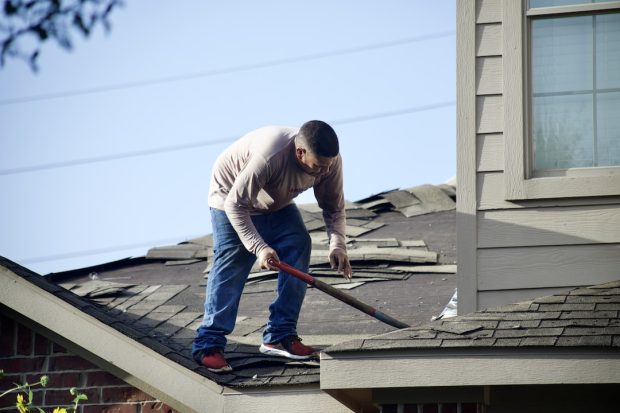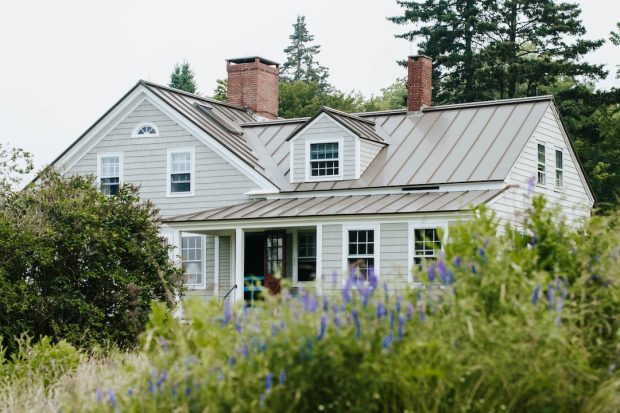Installing a new roof is a significant investment for homeowners. With various materials and installation methods available, it can be challenging to determine the exact cost involved in the process. In this article, we’ll discuss essential factors to consider when calculating the cost of a new roof and provide you with an actionable guide to make an informed decision about your roofing project. Keep reading to learn more.
Understanding Different Roofing Materials

One of the primary factors that impact the cost of a new roof is the choice of roofing materials. Various options include asphalt shingles, metal roofing, wood shakes, and slate tiles. Each material comes with its distinct advantages and price ranges. For example, asphalt shingles are a popular choice due to their durability and cost-efficiency. On the other hand, metal roofing is more expensive, but it offers better energy efficiency, requires less maintenance, and lasts longer than traditional asphalt shingles.
When selecting the roofing material, it’s vital to consider your budget, location, and specific needs. Homeowners in warmer climates, for instance, might benefit from a metal roof due to its energy efficiency and heat resistance. Alternatively, those living in areas with high wind and hail might opt for impact-resistant asphalt shingles.
It’s essential to research each material’s cost, performance, and lifespan before making a decision. A roofing calculator cost can help you compare different materials and get a better understanding of the overall cost for your project.
Planning for Roof Size and Complexity
Another significant factor in calculating the cost of a new roof is the size and complexity of the roof. The total square footage, or roof area, directly affects the amount of material needed and the labor cost involved. A larger roof will naturally require more materials and labor, resulting in a higher cost. Keep in mind that roofing contractors typically base their pricing on “roofing squares,” with each square being equal to 100 sq ft of roofing material. Instant Roofer is a great site to use in order to learn more about roof replacement cost depending on the pitch of the roof and the size. The site has a calculator to help you figure out the average cost of replacement.
The roof’s complexity plays a role in the overall expense. Roofs with steep slopes, tight corners, or intricate designs are more challenging to work on and may require specialized labor and techniques. These complexities will impact labor costs, as well as the necessary materials and the duration of the project.
To account for these factors, it’s essential to carefully evaluate your roof’s size and complexity, considering the required materials and workmanship. This evaluation will ensure that you have a realistic budget and understand any potential complications.
Factoring in Labor Costs

Labor constitutes a significant portion of the total cost of a new roof. Many variables, such as the size and complexity of the roof, geographical location, and the experience of the roofing contractor, will impact labor costs. The labor required to install a metal roof can greatly differ from the labor required to install wood shingles. Skilled contractors with extensive experience may charge more, but they are likely to provide the best quality work and ensure that your new roof lasts a long time.
While it may be tempting to choose the cheapest contractor available, it’s vital to consider the long-term benefits of paying for skilled and reliable labor. Investing in quality workmanship can prevent future maintenance expenses and ensure your new roofing lasts its full lifespan. Be sure to request detailed quotes from multiple contractors to get a clear understanding of labor costs and quality of work for your specific project.
Considering Roof Removal and Installation Costs
If you’re replacing an existing roof, then the removal of the old material will be an additional cost to consider. Several factors, like roofing material type, the number of layers to be removed, and disposal fees, will impact the cost of roof removal. It’s essential to discuss these factors with your chosen contractor and get a comprehensive quote for your project.
Installation costs of the new roofing will also vary depending on the material choice and the contractor’s experience. Some materials, such as slate tiles or specialized roofing systems, may require specific expertise and result in higher installation costs. Make sure to factor in both removal and installation costs for an accurate estimate of your new roof’s overall expense.
Assessing Additional Costs and Contingencies
In any home improvement project, there are often additional and unforeseen costs that can arise once work begins. These costs can include repairs or replacements of decking or structural supports, materials needed for waterproofing or insulation, and even costs related to permits or inspections. It’s crucial to build a contingency fund into your budget to cover these unexpected expenses and keep your project on track.
Discuss possible additional costs with your contractor, and ask for recommendations on how to manage and minimize them. This proactive approach will help to ensure a smooth project and prevent unexpected financial stress during the process.
Looking for Rebates, Incentives, and Financing Options
An often-overlooked aspect of budgeting for a new roof is the possibility of taking advantage of rebates or incentives. Energy-efficient roofing materials or solar panel installations, for example, sometimes have local, state, or federal tax credits or rebates available. Research local programs and incentives to see if your roofing project might qualify for financial assistance.
Additionally, if you need to finance your project, shop around for the best financing options available. Many contractors offer financing plans, but it’s essential to compare options, interest rates, and terms to ensure you secure the best deal for your situation.
Preparing a Comprehensive Project Budget
Lastly, compile all the costs associated with your roofing project to generate a comprehensive budget. This process should include material costs, labor expenses, removal and installation costs, contingency funds, and any applicable rebates or incentives. Having a detailed budget will help you understand the financial investment required and give you a solid foundation for making decisions about your new roofing.
Keep in mind that while it’s essential to remain cost-conscious, it’s also crucial to prioritize quality materials and workmanship. An investment in a durable and well-installed roof will protect your home for many years and increase its value in the long run.
Why It’s Important to Have a Durable Roof

Having a sturdy roof is essential for protecting your house from unpredictable and sometimes harsh weather conditions. Whether it’s heavy rain, strong winds, or even hailstorms, a durable roof acts as a shield for your home. A solid roof ensures that no rainwater leaks into your living room, saving you from those annoying and costly water damage.
But durability isn’t just about weather protection. It also adds value to your property. Think about it, my friend, when potential buyers or renters come to check out your place, having a strong roof can be a major selling point. Nobody wants to invest in a property where they have to worry about constant repairs or replacements. A durable roof gives them a sense of security and peace of mind, knowing that they won’t have to deal with unexpected expenses in the near future.
Now, let’s not forget about the comfort factor. A solid roof helps in maintaining the temperature inside your home. It keeps you cool during scorching summer days and holds in the warmth during chilly winter nights. Say goodbye to those energy bills skyrocketing because your roof can’t keep up with the weather outside.
Overall, calculating the cost of a new roof involves careful research, planning, and communication with your chosen contractor. Thoroughly considering factors like material choice, roof size and complexity, labor costs, and potential additional expenses will give you a clear understanding of the project’s total cost and ensure a successful roofing installation.
Read More:

